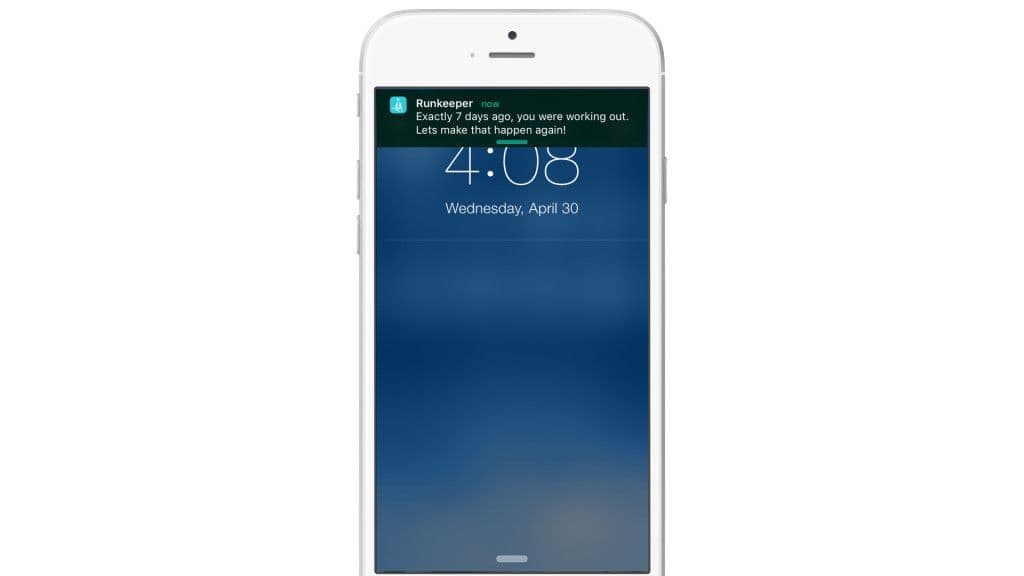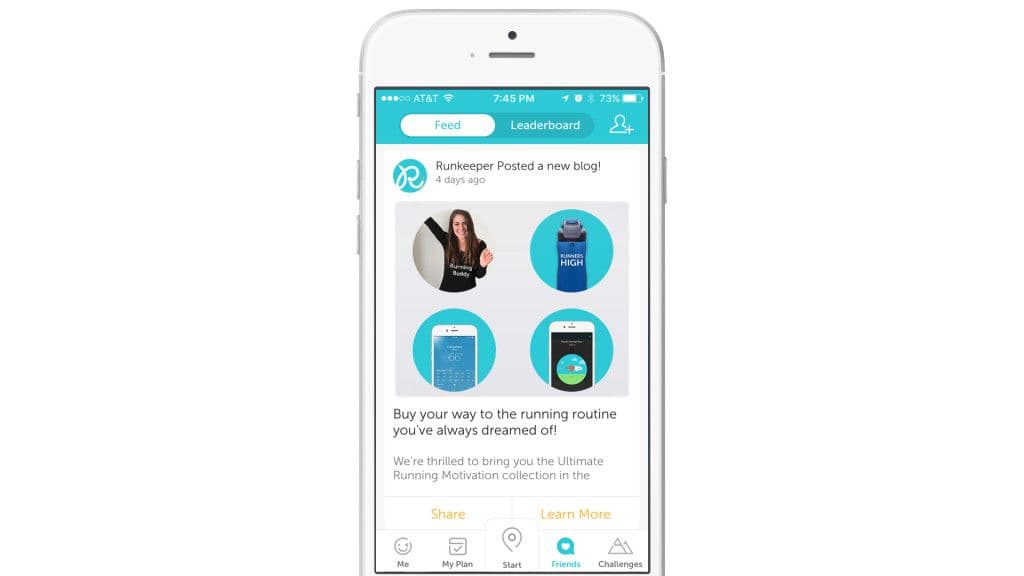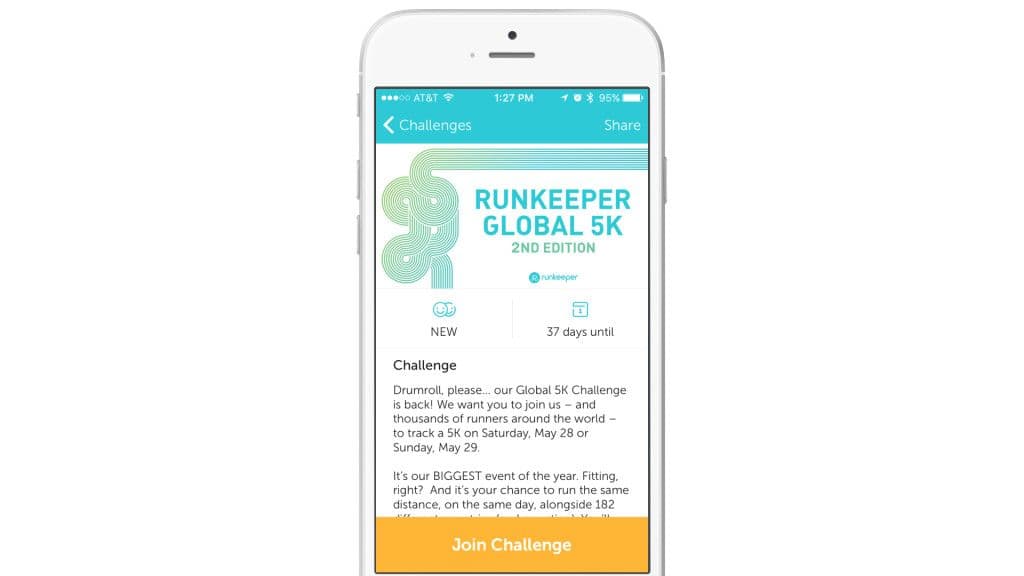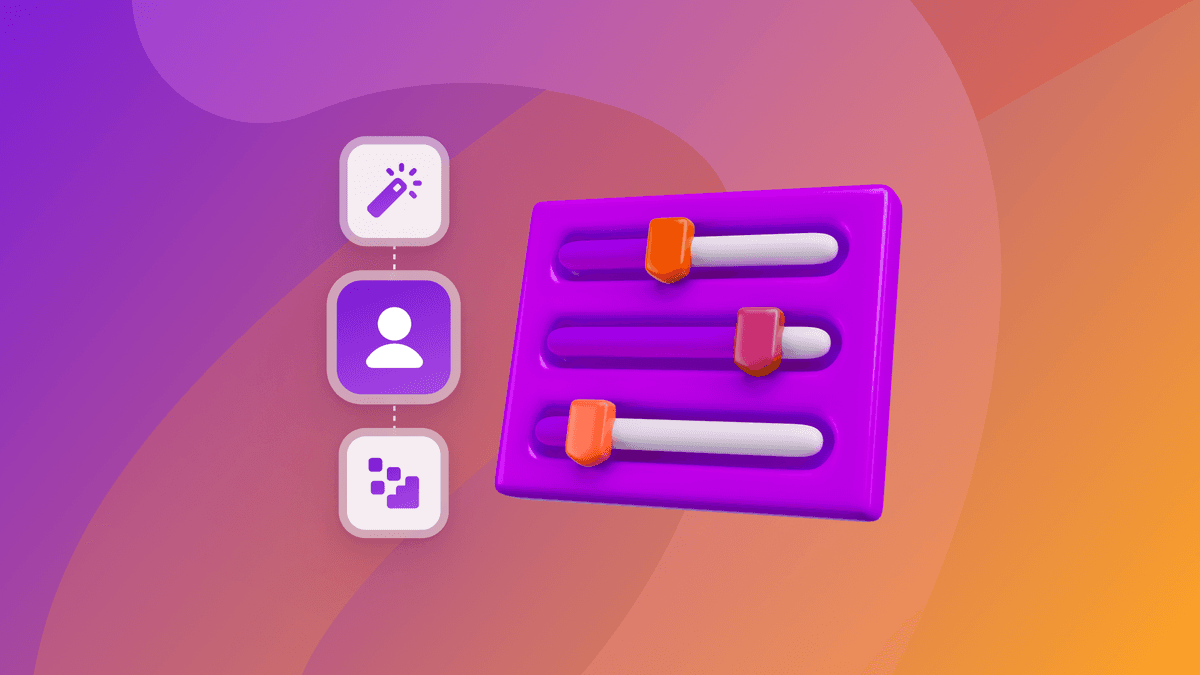How Runkeeper’s Messaging Gets Users to Stick With It (And Them)
Published on May 05, 2016/Last edited on May 05, 2016/8 min read


Team Braze
Every year millions of Americans make a New Year’s resolution. Year after year, the number one resolution is to lose weight or exercise more. But after your first few workouts, when you’re so sore you can barely brush your teeth, it’s not uncommon to for your newfound dedication to fitness to stall.
According to Marketdata Enterprises, Americans spend more than $60 billion a year on different services to lose weight. But no matter how much you spend, sticking to your health regimen is always difficult.
As one of the many people who have proclaimed it’s time to get in shape and felt the stiffening pain the next day, I can relate. This year, after years of being a registered user, I finally started to use my Runkeeper app on a regular basis.
Part of my renewed use is due to Runkeeper’s push notifications. Having experienced what a successful push notification campaign can do, I wanted to learn more about Runkeeper’s messaging strategy and how they approach user engagement and retention. I was able to connect via email with Erin Glabets, Runkeeper’s director of brand and communications, to discuss Runkeeper’s messaging strategy. Here’s what they’re up to.
Building routine, positively
My friend Johnny Adamic is a personal trainer and a health and wellness professional. Whenever I ask him for advice on living a healthier life, he always mentions the importance of eating at the same time every day.
According to Adamic, “Health is about habits and consistency. If meals are skipped it means other things are getting in the way of what I think is our number one priority: health. Eating at the same time each day signals to me you are sticking to this health habit.”
Runkeeper agrees with Adamic’s sentiment on health and routine. In fact, they have created a messaging strategy around building routine. Glabets says that Runkeeper’s messaging is meant to help users get out the door and stick with their running routines. It’s their brand promise.
But sticking with a new exercise program is still hard. It’s painful and not very fun. Runkeeper knows this pain and makes sure their push notifications don’t come off like a nagging friend who tells you you’re fat and should work out. Instead, they use a welcoming, encouraging, and fun brand voice to help build a better connection between the user and their app. This positive association helps keep users engaged with Runkeeper on a daily basis, rather than elicit a negative, Pavlov-like association of their notifications.

Like any professional, I live a busy life and am often at my computer. I sometimes lose sight of the time and all of a sudden it’s dark. Then a parade of excuses come to mind: “I’m tired; it’s late; I’ll do it tomorrow.” But I never do. One missed workout turns into two and then all of a sudden, I haven’t worked out in a week.
Runkeeper is aware of this predicament. To combat this natural behavior, Runkeeper sends strategic push notifications to users. For example, I typically go for a mid-day hike to make sure I get an hour of sunlight and exercise (one of the advantages of living near hiking trails in Los Angeles). If I haven’t gone on my usual hike, I get a message from Runkeeper reminding me that I previously thought this was the perfect time to workout. Since I started to use Runkeeper, I have maintained at least an hour of physical activity every day for six months. Of course, this is reflected in sessions logged for Runkeeper.
Retention through features
Runkeeper is a feature-rich app. In fact, it can seem like an overwhelming amount of features compared to other apps. But each feature serves a purpose that keeps users engaged and loyal to Runkeeper. Glabets informed me that in-app messages from Runkeeper help guide users through the different features. By engaging with more features, users continue to get value from the app and ultimately build the routine Runkeeper wants users to have. Here are a couple examples.
Rewards
In line with its overall strategy of a welcoming and encouraging brand voice is Runkeeper’s use of rewards in-app. By partnering with Kiip and relevant brands, Runkeeper is able to offer real-life rewards to users after they’ve reached a new accomplishment, like a personal best. I for one have been offered discounts on Saucony shoes.

While you might not redeem every reward, it’s nice to get a congratulatory message after a successful workout. Glabets reiterated the value of rewards when building routine. “For new runners who are trying to develop a new routine and find running physically hard or mentally boring, external rewards can be a huge motivator to keep going.”
Challenges
Another in-app feature Runkeeper uses to help runners stay active are long-term challenges. The current challenge is the Runkeeper Global 5K, a weekend where Runkeeper users, no matter their location, can run a 5K. This gives individual runners a sense of community and a goal to strive for. Training with a purpose is much easier than just going out for another run.
Runkeeper uses in-app notifications to let users know of these challenges as they become available.

Friends
Running with a partner is a great way make sure you stay consistent with your routine. But finding a running partner with your same pace and coordinating regular times to run is nearly impossible. Runkeeper is a great alternative to a running partner, but it’s not quite the same as running with a peer. If you skip a day, only the app knows.
Runkeeper brings a social element to your workouts by allowing you to connect with your contacts and seeing who also uses Runkeeper. You’ll build a friend list, as on Facebook, and you’ll be notified when your friends complete a workout. It’s motivating when you’re feeling tired and you get a message saying Teri just finished a three mile run. Now there’s no excuse for me not to go be active!
Personal plan
Another key feature Runkeeper relies on for customer retention is the personal plan. Users have the option to set goals or training plans. Messaging is important to these plans because no measurement of improvement is too small.
Glabets noted that “with personal goals, we make it clear that no goal is to small and that every bit of progress matters.”
What you can learn from Runkeeper
It’s hard to argue with Runkeeper’s success. In February, the company was acquired by Asics for an undisclosed sum. But if the acquisitions of their competitors is any indication, it was a financial success.
Define one major messaging purpose
The constant among all of Runkeeper’s messaging is that everything points back to a single purpose. Runkeeper wants to help build routine among its users. Routine is not only what keeps people coming back to the app, but makes users successful in their workout endeavors.
Identify that one purpose you want your users to walk away with when they engage with your messaging.
Build a positive rapport
Runkeeper’s overall brand is very friendly and positive. This encourages a positive association for the user with the different messages and notifications. When people receive a notification from Runkeeper, they’re happy to check it out. They’re not inconvenienced or feel like they’re being interrupted.
There are plenty of apps that send notifications that evoke no emotion or feeling, like for me, when a photo-sharing app notifies me that one of my contacts has joined the app. You read the message and think, “ok, so what?” You’re not compelled to take any action. When I get a Runkeeper notification, I feel like I have a cheerleader and I’m compelled to take the action suggested.
Be creative, there is more than one way to connect with users
One of the things I think is remarkable about Runkeeper is how many different ways they are able to connect with me to take action. All they want me to do is go run, but they’re able to find different angles to get me to do it. Not all of them apply to me (I don’t participate in challenges, for example) but Runkeeper has discovered enough ways to connect with all their users that a few keep me using their app regularly. Their messaging has really changed my personal behavior.
Runkeeper has effectively identified their purpose and created messaging that is positive and compelling, allowing them to better connect with their users and develop long-term relationships. All brands can apply these lessons to their messaging strategy with an eye for increasing user engagement and retention.
Be Absolutely Engaging.™
Sign up for regular updates from Braze.
Related Content
View the Blog
How behavioral marketing turns data into personalized experiences

Team Braze

Are you AI-savvy enough to survive? A wake-up call for CMOs

Team Braze

What are contextual bandits? The AI behind smarter, real-time personalization
